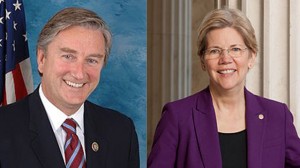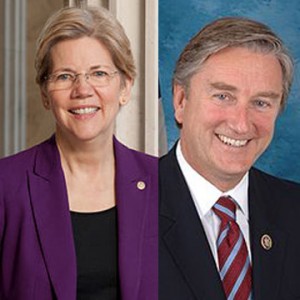 In June, high school seniors across the nation will pull on their graduation robes and take pictures with proud parents, celebrating the end of high school and looking forward to a new beginning in college. But on July 1, they will get an unpleasant graduation gift from the federal government: the interest rate on new subsidized student loans will double from 3.4 to 6.8 percent.
In June, high school seniors across the nation will pull on their graduation robes and take pictures with proud parents, celebrating the end of high school and looking forward to a new beginning in college. But on July 1, they will get an unpleasant graduation gift from the federal government: the interest rate on new subsidized student loans will double from 3.4 to 6.8 percent.
These students and their families have worked hard, saved what they could and borrowed what they need to pay for higher education. Rather than reward their efforts, the government plans to add to their burden. Students are already drowning in debt. With $1 trillion in outstanding student loans and many borrowers struggling to stay afloat, we cannot afford to let this happen.
When our students go on to higher education, it helps us all. No state knows that better than Massachusetts. We have the nation’s highest percentage of adults with postsecondary degrees, and our highly skilled workforce attracts businesses from out of state and provides the raw material to launch new businesses in state. Our highly skilled workforce is helping our economy grow and recover faster than other states, which is why it is so important to help our students get a good education.
Some people say that we can’t afford low interest rates for students. But the federal government offers far lower rates on loans every single day — they just don’t do it for everyone. Right now, a bank can get a loan through the Federal Reserve discount window at a rate of less than one percent. The same big banks that destroyed millions of jobs and broke our economy can borrow at about 0.75 percent, while our students will be paying nine times as much as of July 1.
This is not fair. And it’s not necessary, either. The federal government makes 36 cents on every dollar it lends to students. Just last week, the Congressional Budget Office announced that the government will make $51 billion on the student loans it issued this year — more than the annual profit of any Fortune 500 company, and about five times Google’s yearly earnings. We should not be profiting from students who are drowning in debt while we are giving great deals to big banks.
That’s why we introduced the Bank on Students Loan Fairness Act. The bill gives students the same deal that we give to the big banks by allowing those who are eligible for federally subsidized Stafford loans to borrow at the same rate offered to banks through the Federal Reserve discount window. For one year, the Federal Reserve would make funds available to the Department of Education to make these loans to our students. This would give students relief from high interest rates while giving Congress time to find a long-term solution.
Fixing the interest rate on new subsidized loans is only a first step in helping students who are drowning in debt. We must ensure that the interest rates on all student loans are as low as possible, and that struggling borrowers have options to help them avoid default. Congress will have the opportunity to address these issues next year when it reauthorizes the Higher Education Act. We will work with our colleagues to make student loans a fair deal for students rather than a profit center for the federal government.
Economists explain that banks need low rates because their stability is essential to our shaky economic recovery. But students are just as important as banks to a strong recovery. High levels of student debt pose a risk to our economy if students cannot pay it back. If the Federal Reserve can lend trillions to financial institutions at low rates to grow the economy, surely it can float the money that will keep student loan payments low, keep us competitive and grow our middle class.
Unlike big banks, students do not have armies of lobbyists and lawyers. They’re banking on us to do what’s right. Let’s bank on students by investing in their futures and giving them a break on student loan interest.
Senator Elizabeth Warren and Congressman John Tierney are co-sponsors of the Bank on Students Loan Fairness Act. This piece was first published in The Boston Globe.






